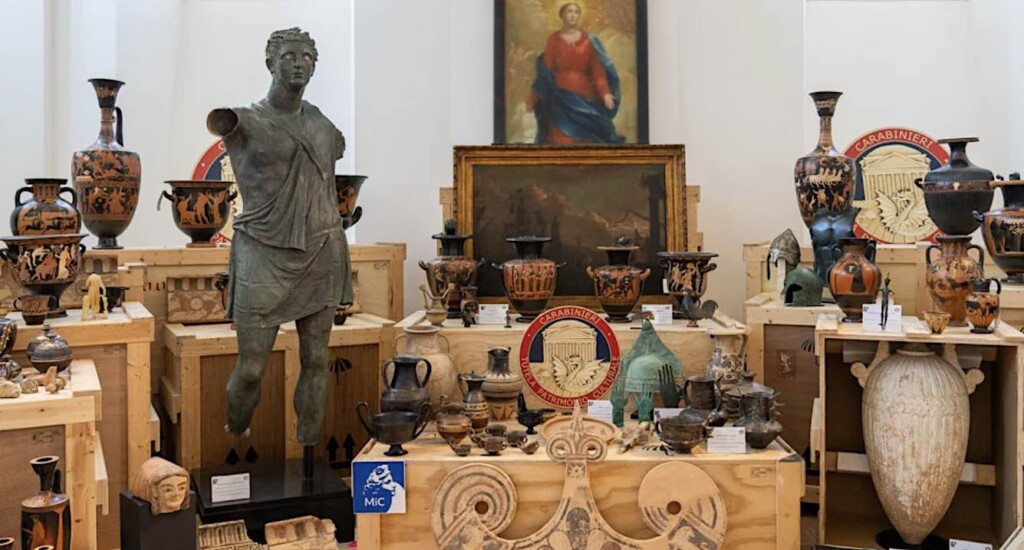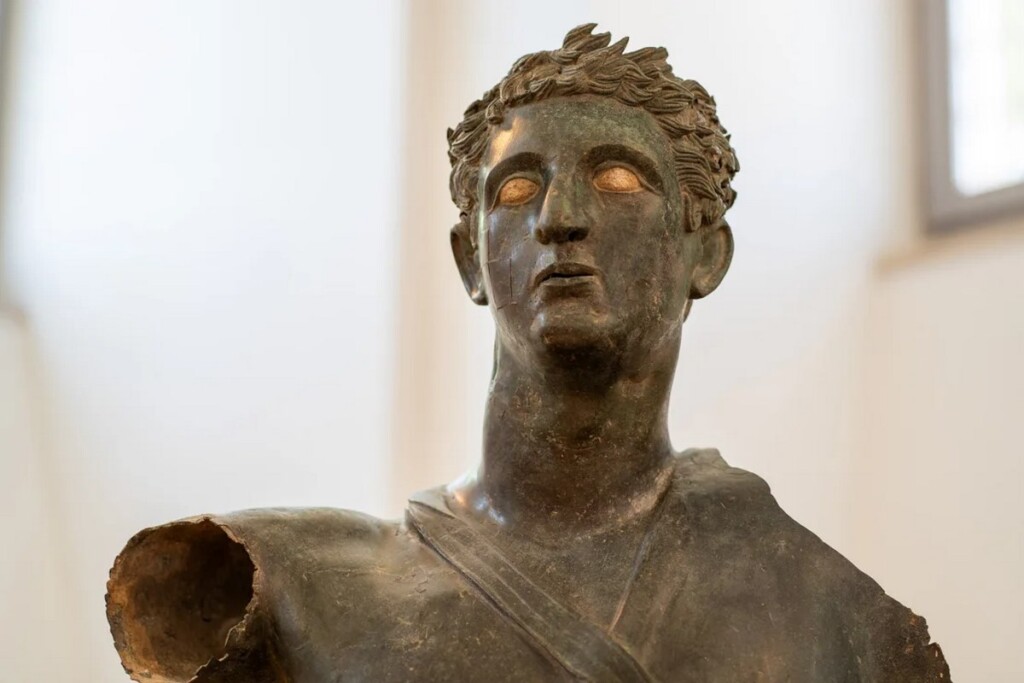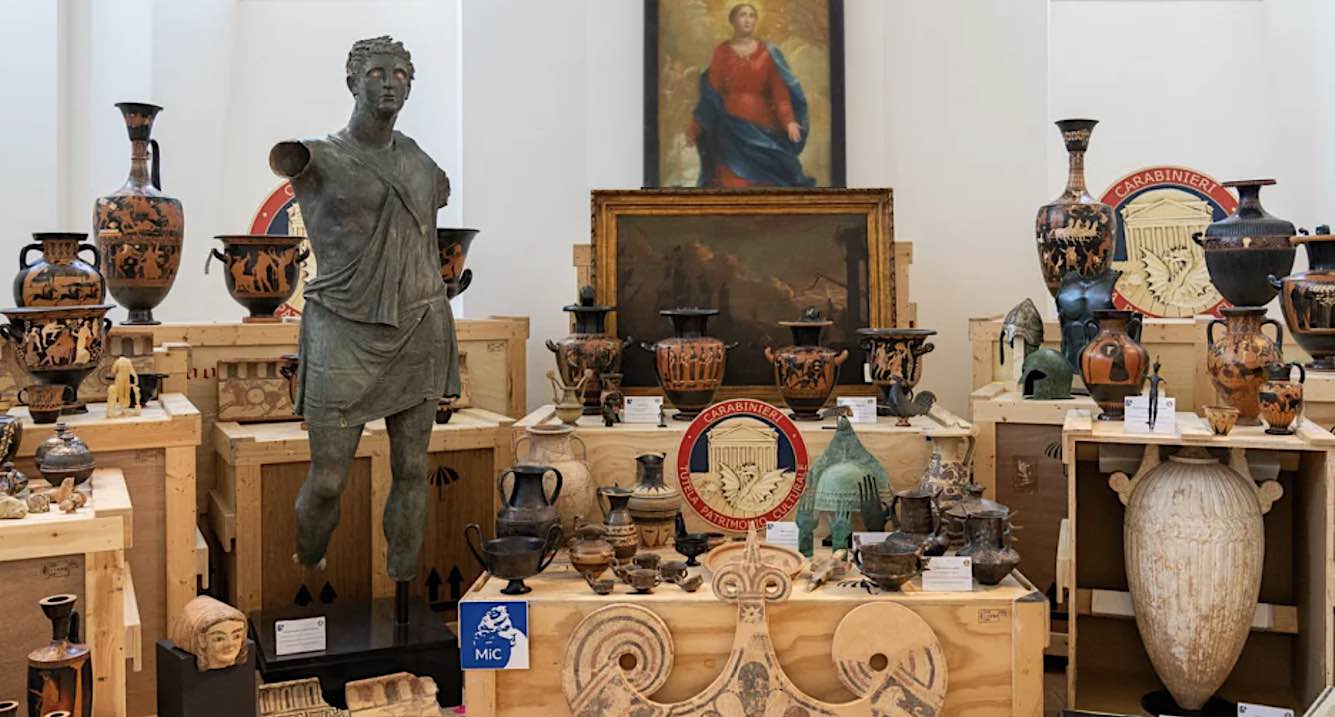
US law enforcement and consular officials recently unveiled a massive trove of stolen art and antiquities worth around €80 million set to be repatriated to Italy “where it belongs.”
The pieces range from the 9th century BCE to the 4th century CE, and include Roman coins, a mosaic floor, Umbrian bronzes, military equipment, oil paintings, sculptures, and a variety of pottery.
The pieces were either dug up during illicit excavations or stolen in high-profile art crimes in the regions of Calabria, Campagna, Puglia, Sicily, and Lazio. Some were seized from private collections, and others were handed over by museums convinced by the authorities’ evidence of their plundered origin.
The haul was collected and processed by the Art Trafficking Unit (ATU) at the Manhattan District Attorney’s Office, a veritable force of nature in the pursuit of trafficked art and antiquities.
Prosecutor Matthew Bogdanos received help from Italy’s Carabinieri for the Protection of Cultural Heritage, the art crimes unit of the country’s armed policing force. The Carabinieri operate the Stolen Works Of Art Detection System or SWOADS, an artificial intelligence program that since 2023 has led to the confiscation of 105,474 pieces of art worth more than €264 million worldwide, according to the unit’s commander, Francesco Gargaro.
“When artifacts are taken from clandestine graves, they have never been cataloged,” General Gargaro told CNN. “That means that, in addition to the items themselves, their historical context was stolen, robbing archaeologists of valuable information.”
Some of the haul’s most valuable relics include a bronze statue crafted by the Umbrian tribe in remarkably good condition, several bronze heads crafted 2,400 years ago, and a mosaic floor depicting the myth of Orpheus dating to the 3rd or 4th century CE.
“Looting is local,” Bogdanos said. Locals, he adds, “know when the security guards come on, they know when they come off. They know when the security guards are guarding particular sites and not others. They know when there are scientific, proper, approved archaeological excavations, and then they know when those archaeological excavations close for example, for the winter or for lack of funding.”

For this reason, Bogdanos explains there will always be looting, but the buying and selling of these pilfered items by sinister or unscrupulous collectors in the West is what can be controlled and eliminated.
MORE ART CRIMES SOLVED: Man Discovers Attic Filled with Looted Art from Battle of Okinawa–Works with FBI to Repatriate it All to Preserve History
With District Attorney Alvin Bragg’s leadership and Bogdanos’ tireless work tracking down stolen items, Manhattan has become an art-bust capital of the world, with the ATU recovering and returning more than 1,000 antiquities stolen from 27 countries, valued at over $215 million in just a few years.
278 of these have been Italian in origin. They also include 307 that were returned to India, 133 returned to Pakistan, 16 returned to Egypt—including the incredible Fayum Mummy Portrait, 55 returned to Greece, and 1 truly priceless artifact to the nation of Bulgaria—a bronze helmet that likely belonged to Philip of Macedon, Alexander the Great’s father.
SHARE This Incredible Success Of Law Enforcement With Your Friends…




















